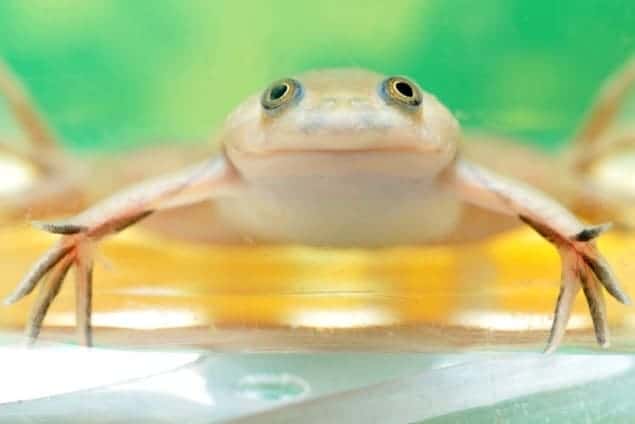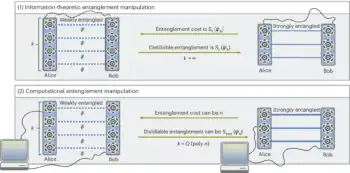
A single rod photoreceptor cell taken from the eye of a frog has been fashioned into an extremely sensitive detector that can count individual photons and determine the coherence of extremely weak pulses of light. Created by researchers in Singapore, the work could lead to hybrid light detectors that incorporate living cells.
The eyes of humans and other living organisms are extremely sensitive and versatile detectors of light, which can often outperform man-made devices. Indeed, a rod photoreceptor cell in the human retina will respond to just one photon – something that only the most sensitive man-made detectors are capable of doing. As well as learning how to make better light detectors by studying the eye, a better understanding of its function could lead to the development of “bioquantum” devices that combine biological and man-made components to study aspects of quantum optics such as “squeezed” light.
In this latest study, Leonid Krivitsky and colleagues at the Agency for Science, Technology and Research in Singapore have focused on rods from the eye of the African Clawed Frog (Xenopus laevis), a species that is much studied by biologists.
Stemming the flow
Each rod has an outer segment (OS) that contains rhodosin photopigment – a substance that undergoes a chemical change when exposed to light. When in the dark, a constant current of sodium, potassium and calcium ions flows in and out of the cell. However, when a photon strikes the rhodopsin, it sets off a chain of chemical reactions that switchs off some of the ion-transport channels. This causes the electrical polarization of the cell, which results in an electrical signal that is picked up by the nervous system and relayed to the brain.
Individual rods are about 50 μm long and about 5 μm in diameter. The experiment begins with a rod being sucked into a micropipette and kept alive by being immersed in a special solution that is similar to that in the eye. The micropipette also acts as an electrode, which allows the ion current to be detected using a low-noise amplifier.
The team used green laser light (532 nm wavelength) to study the optical response of individual rods. The team fired several different types of laser pulse at the rods and measured the response. Before a pulse reaches the rod, the light is split into two paths. One path continues to the rod and the other goes to an avalanche photodiode (APD) – an extremely sensitive light detector capable of seeing single photons. This optical set-up is used as a Hanbury–Brown–Twiss interferometer – which allows the team to determine the coherence of the light arriving at the rod.
Counting photons
In one measurement, the team measured the photocurrent produced by the rod while changing the average number of photons per pulse from 30 to 16,000. As expected, the photocurrent increased as a function of number until it saturated at about 1000 photons. The team also looked at how the rods responded to two different types of light pulse – pulses of coherent laser light and “pseudothermal” pulses. The latter are laser pulses that are focused onto a rotating disk that has been roughened using sandpaper grit. The resulting specked light is then sent through a diaphragm and emerges as a pulse with little coherence.
Coherent and pseudothermal pulses have different photon-number distribution statistics, and the team was able to use the rods to detect the difference. This, according to the researchers, means that the rods could be used as highly sensitive detectors of photon statistics. Putting all of the measurements together, the team was also able to conclude that each photon in the pulse interacts with just one rhodopsin molecule.
While the light sources used by the team are classical, the fact that the rods can distinguish between coherent and pseudothermal pulses suggest that they could be used in quantum optics and quantum communication. Indeed, the team plans to study the response of the rods to correlated two-photon light.
The research is described in Physical Review Letters.



